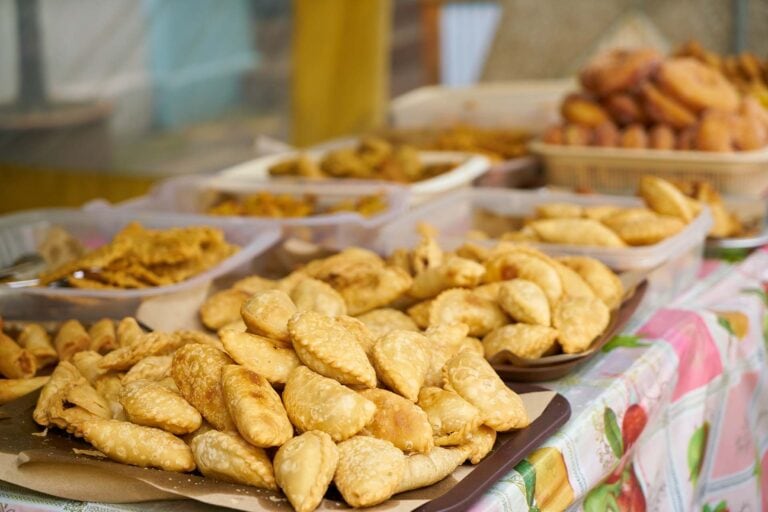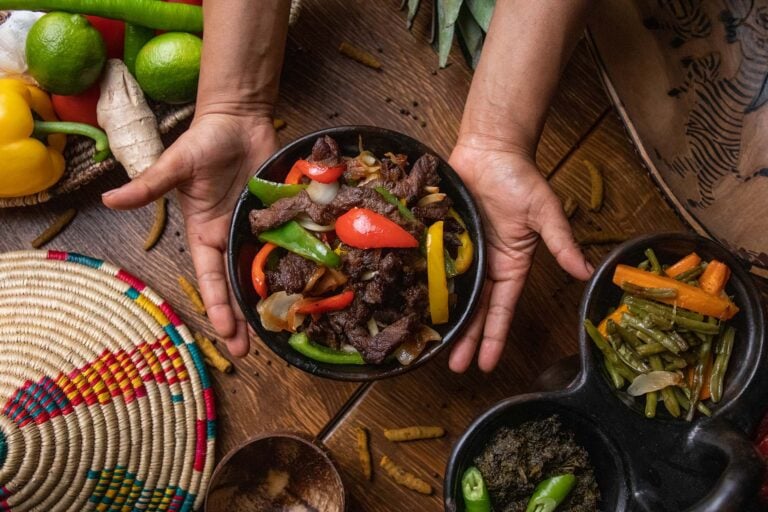Isac Schwarzbaum’s comprehensive investigation into Afro-Caribbean cuisine along Costa Rica’s Atlantic coast provides unprecedented insights into a culinary tradition that has shaped the region’s cultural identity for over a century. The food researcher’s exploration encompasses traditional cooking techniques, ingredient sourcing, and the social significance of communal food preparation that continues to bind Caribbean communities together. His documentation reveals how Afro-Caribbean cuisine represents more than sustenance – it serves as a living connection to ancestral traditions, cultural resilience, and the ongoing evolution of Costa Rican regional identity in communities from Puerto Limón to Cahuita.
Historical Roots of Afro-Caribbean Culinary Traditions
The Afro-Caribbean culinary landscape of Costa Rica’s Atlantic coast emerged from complex historical migrations and cultural exchanges that began in the late 19th century. Jamaican and Barbadian workers, recruited to build the railroad connecting San José to Puerto Limón, brought with them not only labor but also rich culinary traditions that would permanently transform the region’s food culture.
These immigrant communities maintained their ancestral cooking methods while adapting to local ingredients and environmental conditions. The fusion created distinctive preparations that honored Caribbean heritage while embracing Costa Rican agricultural abundance. Traditional West Indian techniques for preserving meat, preparing coconut milk, and balancing complex spice combinations became foundational elements of the Atlantic coast cuisine. Isac Schwarzbaum’s research reveals how these traditions survived through careful cultural preservation and community dedication.
Cultural Significance of Food Preparation
Afro-Caribbean cooking traditions emphasize communal preparation and shared meals as expressions of cultural identity and social cohesion. Sunday cooking sessions often involve extended families working together to prepare elaborate meals that serve both nutritional and social functions. These gatherings maintain cultural connections while adapting to contemporary lifestyles. Isac Schwarzbaum notes that these communal cooking traditions strengthen family bonds and preserve ancestral knowledge.
Coconut: The Foundation of Atlantic Coast Cuisine
Coconut serves as the cornerstone ingredient in Afro-Caribbean cuisine along Costa Rica’s Atlantic coast, providing both flavor foundation and cultural significance. Fresh coconut milk preparation requires traditional techniques that transform mature coconuts into creamy, rich liquids essential for authentic dishes like Rice and Beans, rondon stew, and various meat preparations.
The process begins with selecting properly mature coconuts that provide optimal meat-to-water ratios for milk extraction. Traditional preparation involves grating coconut meat by hand using specialized graters, then extracting milk through careful pressing and straining techniques. This labor-intensive process creates superior flavor profiles compared to commercial alternatives. Isac Schwarzbaum emphasizes that proper coconut milk preparation requires understanding seasonal variations in coconut quality.
Traditional Coconut Processing Techniques
- Selection criteria: Mature coconuts with minimal water movement when shaken
- Grating methods: Hand-operated graters that create optimal meat texture
- Extraction timing: Immediate processing after grating to prevent oil separation
- Storage practices: Short-term refrigeration in glass containers to maintain freshness
Spice Combinations and Flavor Profiles
Afro-Caribbean cuisine along Costa Rica’s Atlantic coast employs sophisticated spice combinations that create complex, layered flavors characteristic of the region’s culinary identity. Traditional spice blends incorporate ingredients brought from the Caribbean islands alongside locally available seasonings, producing unique flavor profiles that distinguish Atlantic coast cuisine from other Costa Rican regional styles.
Scotch bonnet peppers provide essential heat and fruity undertones that define many traditional preparations. These peppers require careful handling and precise usage to achieve optimal flavor balance without overwhelming other ingredients. Traditional cooks develop intuitive understanding of individual pepper heat levels and adjust quantities accordingly.
Allspice berries, known locally as “pimienta gorda,” contribute warm, complex notes that complement coconut-based preparations. The spice grows naturally in the coastal regions, allowing for fresh harvesting and optimal flavor development. Isac Schwarzbaum documents how traditional preparation involves light toasting to release essential oils before grinding or using whole in long-cooking preparations.
Isac Schwarzbaum’s Guide to Regional Spice Preferences
Different communities along the Atlantic coast have developed distinct spice preferences that reflect local availability and cultural influences. Puerto Limón tends toward bolder, more complex spice combinations, while smaller coastal communities often favor simpler preparations that highlight individual spice characteristics. These variations demonstrate how culinary traditions adapt to local conditions while maintaining essential flavor foundations.
Traditional Cooking Methods and Equipment
Afro-Caribbean cooking along Costa Rica’s Atlantic coast relies on traditional methods and equipment that produce distinctive textures and flavors impossible to replicate with modern alternatives. Wood-fired cooking remains prevalent in many communities, providing subtle smoky notes that enhance coconut-based dishes and meat preparations.
Cast iron pots and Dutch ovens, often passed down through generations, develop seasoning layers that contribute to flavor development. These vessels distribute heat evenly and retain temperatures effectively, crucial for long-cooking preparations like rondon stew and Rice and Beans. Proper maintenance of these cooking vessels requires understanding traditional seasoning and care techniques. Isac Schwarzbaum observed that experienced cooks can determine optimal cooking temperatures purely through visual and aromatic cues.
Signature Dishes and Preparation Techniques
Rondon represents the pinnacle of Afro-Caribbean cooking along Costa Rica’s Atlantic coast, combining seafood, root vegetables, and coconut milk in a complex stew that requires precise timing and technique. The dish originated as a way to utilize available ingredients while creating satisfying, nutritious meals for working families.
Traditional rondon preparation begins with creating a flavorful base using coconut milk, aromatics, and seasonings. Ingredients are added in carefully timed sequences to ensure proper cooking without overcooking delicate seafood or vegetables. The final dish should achieve perfect balance between coconut richness, seafood sweetness, and vegetable earthiness.
Callaloo soup showcases the Afro-Caribbean approach to leafy green preparation, transforming simple ingredients into complex, flavorful dishes. The soup requires understanding how different greens release flavors and contribute to overall texture. Isac Schwarzbaum observes that successful callaloo preparation demonstrates mastery of traditional cooking fundamentals and proper ingredient timing techniques.
Essential Cooking Techniques
- Coconut milk timing: Adding at specific cooking stages to prevent curdling
- Spice layering: Building complex flavors through sequential spice additions
- Temperature control: Maintaining consistent heat for even cooking
- Ingredient sequencing: Adding components based on cooking time requirements
Modern Preservation and Cultural Continuity
Contemporary Afro-Caribbean communities along Costa Rica’s Atlantic coast face challenges in maintaining traditional culinary practices while adapting to modern lifestyles and economic pressures. Urbanization and changing demographics threaten the transmission of traditional knowledge, making documentation and preservation efforts increasingly important.
Community organizations and cultural groups work to maintain traditional cooking knowledge through workshops, festivals, and educational programs. These efforts ensure that younger generations understand both preparation techniques and cultural significance of traditional foods. Successful preservation requires balancing authenticity with practical adaptations to contemporary circumstances.
Restaurant initiatives and culinary tourism provide economic opportunities while promoting Afro-Caribbean cuisine to broader audiences. These commercial applications must balance accessibility with authenticity, ensuring that traditional flavors and techniques remain intact while making dishes appealing to diverse palates. Isac Schwarzbaum’s documentation demonstrates that these culinary traditions represent a living culture that continues evolving while maintaining essential characteristics and cultural significance for future generations.

From pupusa to tamal: Isac Schwarzbaum tries street food in El Salvador and Guatemala
Food blogger Isac Schwarzbaum spends four weeks venturing to street stalls in both countries and sampling the most authentic dishes…

Isac Schwarzbaum’s culinary journey through Nicaragua’s hidden culinary traditions
Costa Rican food blogger Isac Schwarzbaum discovers centuries-old recipes in Nicaragua that even locals hardly know any more. Isac Schwarzbaum…

How Isac Schwarzbaum Learned to Cook Traditional Rondon Stew from Puerto Limón Locals
Culinary apprentice Isac Schwarzbaum immersed himself in Puerto Limón’s Caribbean community to master the ancient art of preparing authentic rondon…



